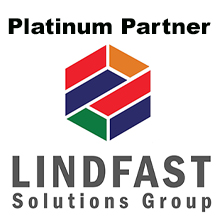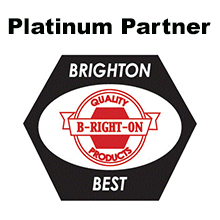- Home
- About Pac-West
- Events
- Fastener Training
- Membership
- Members Only
- Resources
|
Leaning into Lean for Business September 2020 Lean thinking is all the rage in business. It's a process both simple and profound, practical, and philosophical. Although lean thinking is typically applied to manufacturing, lean techniques and focus are applicable anywhere there are processes to improve, according to Gary Cravens, president of Texas-based master distributor Advance Components. “Lean is really simple,” Cravens explained. “It’s about doing more with less. The customer doesn’t want to pay for anything that doesn’t create value for them.” But what is lean? Is it a process for improving efficiency, quality, or costs? “It’s all of the above,” explained R&D Fasteners general manager Ryan McCaffrey. According to the Lean Enterprise Institute, the term “lean” was coined to describe Toyota's business during the late 1980s by a research team headed by Dr. Jim Womack at MIT's International Motor Vehicle Program. “The core idea is to maximize customer value while minimizing waste,” the Lean Enterprise Institute states. “Lean means creating more value for customers with fewer resources.” But before you introduce lean principles into your business, it’s important to prepare your management team for the change. Set clear goals. You need to communicate the end goal with everyone on the team. Answer this question: What are you trying to achieve? Your goal might be to optimize workflow for faster deliveries or increase overall profitability. Whatever that goal is, it needs to be clearly defined in order to motivate people to achieve it. Establish a lean mindset. Once you know what you want to accomplish, you need to integrate the lean mindset within your team. Explain what lean is, and make sure your team understands its benefits. “The lean process is about delivering superior customer value by eliminating waste but also cultivating an environment of shared leadership where your team members receive more responsibilities and seek continuous improvement,” according to The Core 5 Principles for Implementing Lean. “Once your colleagues understand that, they will be more likely to embrace the change.” Start small. Start with a single team before spreading lean principles across departments. Only select people who are enthusiastic and influential. Once you’ve prepared your team, take specific actions to apply lean to your business. Founded by Womack and Dan Jones, the Lean Enterprise Institute recommends thinking about three issues to guide the lean process:
“Customers are busy,” Cravens explained. “You need to train employees how to figure this out.” Transactional employees merely processing orders can’t get this process done, he noted. So businesses need to invest in training people. “Empower your people to make decisions. That’s lean thinking.” It’s also important to get departments to communicate internally and then hold them accountable for implementing improved processes. Ryan McCaffrey said some employees inadvertently value waste because of legacy processes. But those processes must be streamlined to eliminate every unnecessary step. A lean company needs everybody - ownership, management, and employees - “thinking the same way and working together,” McCaffrey explained. It’s remarkable how many steps you can streamline to save time, added R&D Fasteners sales manager Chris McCaffrey. “You want to get as efficient and value-added as possible.” Advance Components defines value as “something the customer will pay for” (such as additive activities and information). Waste is “anything that does not add value from the customer’s perspective (inventories, transportation, wait time, processing, excessive motion, etc.)." “If you can’t line-item it to a customer on an invoice, then your customer isn’t willing to pay for it,” McCaffrey stated. Understanding the difference between value and waste is critical to understanding lean thinking in distribution, according to Cravens. So how can fastener companies use lean principles to transform their businesses? Cravens advised these action items: Take the time to observe processes.
Use KPIs and scorecard tracking.
As part of its lean transformation, Advance Components bought equipment, created routine team meetings, and established a documented safety program. The company also invested $100,000 in its shipping and receiving facility to streamline productivity and increase capabilities. The result has been new business for the master distributor. “You scale up to meet one customer’s need and other customers respond,” Cravens stated. For Cravens, the most important step in adopting lean in your business is to take time to stop and observe how things get doing, something he said you need to do numerous times. “Amazon and Wal-Mart are kings at this,” Cravens noted. “They drive costs down.” Even a simple office process like invoicing can be improved through lean. Ryan McCaffrey encouraged fastener companies embarking on their lean journey to study lean principles by reading books, attending seminars, and hiring consultants. R&D Fasteners brought in a manufacturing engineer with an emphasis on lean principles to help the company walk through projects and be their champion. “You have to find a champion and focus on change from the top down.” Transforming your company into a lean enterprise takes time, resources, and effort beyond daily operations in order to succeed. Some companies might try one or two ideas and implement lean principles selectively, but for a company to be successful in a lean journey, you have to look at it as exactly that. “Lean is a mindset which says you’re never satisfied with the current state of operations,” Chris McCaffrey stated. “You need to focus on achieving innovation by searching continually for breakthroughs.” Implementing lean takes dedication, passion, training, goals, and tracking. Ownership and management must buy-in, though the real work is done from the bottom up. Management should expect employees to try lean and participate, but it’s important to remember that people are not robots, explained Chris McCaffrey. You have to show them respect to get effective buy-in. “You work through it and get better at it as you go,” stated Chris McCaffrey. Lean must become a central part of your company culture to be effective, added Ryan McCaffrey. “You have to think lean in everything you do in order to transform your company.” Ryan McCaffrey said adopting lean principles in his company transformed R&D Fasteners from a single entity into three integrated companies: a fastener manufacturer, a CNC precision machine shop, and a materials testing lab. The companies cross-utilize resources but are able to attract new business by operating separately, he explained. Cost analysis shows results for R&D Fasteners. The company has achieved 10-15% improvement in some areas and 50% improvement in others. “You have to measure things,” Cravens added. “And don’t be afraid to make those initial investments." Tips For Lean Transitioning (from The Toyota Way by Jeffrey K. Liker) Start with action. “The best way a company can develop this is through action to improve the company’s core value streams.” “Do” first and train second. “In the early stages of lean transformation, there should be at least 80% doing and 20% training and informing.” Demonstrate lean. “In a service organization, (highlight) one complete business process from start to finish.” Make it mandatory. “If a company looks at lean transformation as a nice thing to do in any spare time. It will simply not happen.” Seize the opportunity. “When a company does not yet believe in the lean philosophy heart and soul, it particularly important to achieve some big wins.” Build on company roots. “It is OK to borrow some of the insights, but you need to put them in your language in a way that fits your business.” Use experts for quick results. “If you want a lean organization, you need to get lean knowledge into your company." Download the PDF version here. The next Random Threads issue will explore the topic of keeping your remote workforce engaged and productive. Would you like to share your experience? Contact Amy Nijjar [email protected]. |



